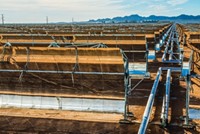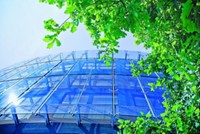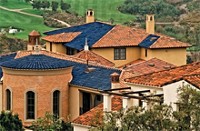Advertisement
Grab your lab coat. Let's get started
Welcome!
Welcome!
Create an account below to get 6 C&EN articles per month, receive newsletters and more - all free.
It seems this is your first time logging in online. Please enter the following information to continue.
As an ACS member you automatically get access to this site. All we need is few more details to create your reading experience.
Not you? Sign in with a different account.
Not you? Sign in with a different account.
ERROR 1
ERROR 1
ERROR 2
ERROR 2
ERROR 2
ERROR 2
ERROR 2
Password and Confirm password must match.
If you have an ACS member number, please enter it here so we can link this account to your membership. (optional)
ERROR 2
ACS values your privacy. By submitting your information, you are gaining access to C&EN and subscribing to our weekly newsletter. We use the information you provide to make your reading experience better, and we will never sell your data to third party members.
Environment
Building Green
Energy-efficient homes, offices, and labs save money and cut CO2, but require a sea change in values for many Americans
by Jeff Johnson
July 16, 2007
| A version of this story appeared in
Volume 85, Issue 29

FOR 60 YEARS, the charitable organization Heifer International has promoted sustainable agriculture by giving farm animals and support to millions of subsistence farmers in the developing world. So when the nonprofit outgrew several rented buildings at its Little Rock, Ark., headquarters and began planning for its new home, its board decided to make a statement.
"We ask farmers in the developing world whose incomes are under $300 per year to do sustainable agriculture, to use compost, and to stop using chemicals. We would be hypocrites if we didn't do the same," says Ray White, a Heifer spokesman.
As a result, Heifer's new 94,000-sq-ft, $17.5 million headquarters is a model of sustainability and was chosen as one of the American Institute of Architects' top 10 green construction projects for 2007. The building is a water miser, meeting almost all its needs with a rainwater collection and treatment system that includes a 4 million-gal constructed wetlands; it provides natural light for all employee work areas; and it uses 55% less energy than a similar-sized conventional building. Heifer now plans to build a model "global village" with goats, camels, and even a water buffalo lolling in the wetlands area to show visitors an example of a typical rural village in a developing country.
During the planning stage, although Heifer had benefited from a $1 million donation of a brownfield building site, its board intensely debated whether to pay the premium to construct a "green building," White says. It would have been even harder for the board to move ahead had it faced the hurdle of gaining shareholder approval, as a public corporation would have had to, he adds.
Heifer's headquarters is the vanguard in a future wave of green buildings, some say, but along with its exceptional beauty and utilitarian grace, the structure cost far more to build than most commercial buildings.
The flip side of Heifer's large headquarters are the low-income home construction programs of two other nonprofits: Habitat for Humanity International, based in Americus, Ga., and Rural Development Inc. (RDI), in western Massachusetts.
Throughout the U.S., Habitat for Humanity has constructed more than 2,000 small, energy-efficient green homes for low-income families. A sprinkling are solar-energy-powered houses in states where use of renewable electricity is encouraged and subsidized, such as a "zero-energy home" in Denver built with support from the Department of Energy.

RDI, which builds affordable green housing in Massachusetts, is now planning a 20-home solar village for low-income residents in Greenfield, Mass. These houses will also be zero-energy homes, similar to a pilot home RDI recently completed. The houses will meet at least 80% of their energy requirements with roof-mounted solar panels and solar hot-water systems. They are well-insulated, small structures with a solid design. RDI benefits from subsidies offered by state, local, and federal programs and has a waiting list of families wanting to move in, says Anne Perkins, a builder and director of RDI's home ownership program.
The Habitat for Humanity and RDI residences are also on the front lines of a growing U.S. green building movement. Because of climate-change fears and a heightened worldwide awareness of problems springing from unchecked energy gluttony, these projects enjoy support from energy-efficiency advocates as well as some architects and builders in the construction industry and several federal, state, and city agencies that are pushing for buildings that use less energy.
Buildings, residential and commercial, are a good place to save energy. In the U.S., 72% of electricity is used by buildings to run appliances and computers, as well as lighting, heating and cooling, and other types of equipment. Homes and businesses are responsible for nearly 40% of U.S. carbon dioxide emissions, according to DOE statistics. CO2 emissions and electricity consumption are split almost evenly between residential and commercial buildings.

The nonprofit U.S. Green Building Council (USGBC) estimates that a typical green building uses 32% less electricity and 36% less overall energy than a conventional building. A 30% reduction in energy use by all U.S. buildings would decrease the nation's overall CO2 emissions by more than 10%.
Last year, at best 2%-or 36,000-of the 1.8 million residential structures built in the U.S. were green, according to USGBC. The National Association of Home Builders says some 97,000 green homes have been constructed since the mid-1990s.
But an exact definition of "green" is hard to come by, and hard numbers on green construction are difficult to back up. All green construction is voluntary, and at least five national organizations offer some kind of independent rating system. The construction industry and even those organizations themselves oppose regulations that would mandate green construction.
USGBC is the most well-known group that rates green buildings. A membership organization created in the early 1990s, USGBC today counts 10,000 organizations in architectural and construction-related businesses among its members. Since it created a green rating system in 2000, most of its work has focused on new commercial construction. Recently, however, it began a pilot program to rate greenness of home construction.
Ashley Katz, a USGBC spokeswoman, explains that its system uses six criteria and a point system to rate a structure's greenness through its Leadership in Energy & Environmental Design program. LEED Green Building Rating System criteria include the site's sustainability, water efficiency, energy use, material resources, indoor environmental quality, and innovation and design processes. The structure is awarded points for each factor, and certification is conducted by third-party auditors who examine the building's compliance with the criteria.
SOME 889 commercial projects are LEED-certified, Katz says, and another 7,000 commercial buildings are in the pipeline seeking certification. Through a pilot program for residences, some 200 homes have been certified, and builders of another 6,000 homes have signaled their desire for certification, she says.
USGBC sees a bright, green future. The group predicts that it will have certified 100,000 commercial buildings and 1 million homes by 2010. It estimates the U.S. green construction market to be around $12 billion per year and expanding.
Chemical companies are among businesses that are profiting from this growing energy-efficiency construction-related marketplace through sales of building products—particularly insulation, adhesive, glass, weatherization products, and wood substitutes. Most visible are DuPont's Tyvek weather-resistant building wrap and Dow Chemical's Styrofoam Weathermate, both of which are omnipresent at construction sites.
The insulation market is expected to grow 5-8% per year for the next five to 10 years, says Scott Young, global director of the Energy Efficiency Portfolio for Dow Building Solutions. Although reluctant to estimate the size of the annual global insulation market, Young says it is in the trillion-dollar range.
Young predicts that growth of the green construction industry will be similar to that of the U.S. auto industry, beginning with a phaseout of traditional raw materials and the substitution of lighter and cheaper synthetics. The result will be less use of scarce natural resources.
"We are seeing lumber as not lumber anymore," Young says. "It is more like engineered wood products that use more of a tree as well as binders to hold wood particles together. There also is more use of plastic alternatives in construction materials," he adds.
But the North American construction industry is slow to change without legislation, Young says. Europe has been more willing to toughen its energy codes. In the U.S., it is really up to builders to sell energy efficiency to home buyers, he says.
The added cost of constructing a green building can range from nearly zero to 10%, with the top end including solar photovoltaic systems and the bottom being the application of better insulation and energy-efficient large appliances, which cost comparatively little when wrapped up in a new home mortgage.
But the savings over the life of a green home can be large, both to an individual and to society. A recent study by the McKinsey Global Institute, an international economic consulting firm, found that the residential sector is the world's single largest consumer of energy, with a 25% share of global demand. And dropping just energy demand for stand-by power for televisions, stereos, and other appliances could save 4-10% of total residential power consumption, the report says. It notes that energy demand from the residential sector is sure to grow as people in the developing world acquire more consumer appliances.
The report recommends mandating more energy-efficiency standards for products. It notes that by requiring the deployment of available construction technologies, such as high-insulation building shells, compact fluorescent lighting, and high-efficiency water heaters, the sector's energy use could be cut by more than one-third.
But convincing builders to include such products as options in their construction portfolios is difficult, and harder still is convincing home owners to pay for them. When walking through a demonstration home, a prospective buyer will be checking many features but, on the surface, is unlikely to see much difference between a slightly more expensive energy-efficient house and a cheaper energy hog next door, notes George James.
James is project leader for DOE's Building America program, which provides technical support to contractors to encourage them to build and, most important, sell low-energy homes. The program was created in 1994 and receives about $13 million per year in funding, a small amount by DOE standards.
James has seven teams of architects and builders who work throughout the U.S. advising contractors on green construction techniques. DOE also provides for outside auditing to ensure the efficiency of the homes its builders offer. The program's focus is on residential construction, and James estimates DOE's support has led to building 34,000 homes that will each show at least a 30% energy-efficiency savings over a comparable conventional home.
"We try to work with production builders. We felt we'd have more impact on the housing market with them," James says. He estimates that most Building America green houses are only 3% more expensive than a conventional home. The program usually steers clear of solar power, which can make the home too expensive, unless construction takes place in a state that subsidizes photovoltaic installation.
The program's emphasis is on affordable housing, and savings often come through replication of an energy-efficient affordable home, James says. "We try to make the homes as green as the builder and homeowner can afford. We have to track the home and show that it really gets the efficiency the builder claims."
IN THE END, James stresses, the builder has to be able to sell the house, and that is the proof that the program works.

A member of one of DOE's seven teams is Robb Aldrich, a building systems engineer with Norwalk, Conn.-based Steven Winter Associates. There, he works with a range of private clients. Energy efficiency, he notes, is the only piece of the green building business that pays for itself. Still, few of his clients ask for it.
"In my experience in residential construction, people are much more interested in other sustainable features—durability, healthy homes, and recycled materials," Aldrich says. "All these attributes have longer legs than energy."
On DOE's dime, as Aldrich puts it, he works with builders like the nonprofit RDI. He is designing heating, cooling, and ventilation systems for RDI's affordable homes in western Massachusetts.
RDI's Wisdom Way Solar Village is backed by DOE. When completed next year, the village will include 20 homes set up as 10 duplexes. Each home will have a 3-kW solar-electric system, solar hot-water heater, double-thick, well-insulated walls, high-performance windows, and other green home attributes. The village is intended for low- to moderate-income homeowners and has two homes set aside for people with physical disabilities.

When RDI began building low-income solar homes in 2004, it installed 1-kW units, but its newer homes carry 3-kW photovoltaic units, which provide enough power to supply at least 80% of residential electric needs. The state of Massachusetts, state and local utilities, and foundations subsidize construction; DOE provides technical support. RDI's Perkins and DOE's James hope the project becomes a model that encourages more contractors to build and sell low-income green housing.
Perkins estimates that the first 3-kW prototype cost about $200,000 for land and construction plus $65,000 in donated time and equipment. Today, she says, green residential construction appeals to two markets: wealthy Americans who can afford to have a green house and people with low incomes who are eligible for subsidized green construction.
Advertisement
"I am hoping for a trickle-up and trickle-down expansion of greenness," Perkins says. "My point is that middle-income people need subsidies, tax breaks, and incentives to incorporate more green and renewable-energy features into their homes. It's not just for their personal gain but to turn our energy-consumptive society around."
Reaching for that middle expansion is Albert Petersen, a high-end home renovator in the small, liberal university town of Boulder, Colo., in the foothills of the Rockies. Fourteen years ago, Petersen took part in a city-run program on sustainable construction for contractors.
A TRUE BELIEVER that Americans need to change their energy-burning ways, Petersen installed a 3.4-kW solar unit on his own roof one year ago, and he hasn't paid a dime for electricity since. He installed the panels primarily because of his concern about global warming, but also for two other reasons: his nine-year-old son, Eric, and Colorado's rebate law.
"I doubt we are going to get global warming under control," Petersen says. "At some point in his life, Eric will look back at his parents and ask, 'What did you do?' And I want to say we tried."
The latter reason is a voter-passed Colorado initiative requiring that XcelEnergy, the state's utility, pay for part of the cost of consumer-based renewable energy. Xcel picked up $15,840 of Petersen's $30,716 solar installation bill. The federal government will pay $2,000 more. Even with the rebates, he figures it will take 18 years to pay off the system.
Petersen has installed only one photovoltaic system for a client. Mostly, he presses for less expensive green projects, such as more insulation, better heating and cooling systems, and indoor air-quality improvements. Convincing clients that it makes sense to go green when renovating homes is tough, he says.
"They never bring it up," Petersen says. The city requires some energy-saving technologies, such as better insulation, and clients go along, he says. A few have requested better air-handling systems and paints and carpets that emit less volatile organic compounds. But he has also had jobs where homeowners have told him to remove the compact fluorescent lights he had installed.

The market is changing, however, Petersen says, pointing to the seven construction trade magazines he receives each month and the green cover stories and ads that now fill the magazines' pages. "A year ago, green construction was completely off the industry's radar screen," he says. "Now, it's 'green this' and 'green that,' and even the National Association of Home Builders is working on a green remodelers' certification program."
But Petersen also sees a bit of "greenwashing," in which large builders put a kilowatt or two of solar panels on the roof of a huge house and market it as a zero-energy home. It is unlikely, he says, that the panels will provide even one-quarter of the energy demanded by the 4,000-sq-ft-plus houses being built today.
But even these solar panels can help grease the wheels for green construction, says Ren Anderson, residential research leader for the Golden, Colo.-based National Renewable Energy Laboratory, which helped build Habitat for Humanity's zero-energy home. The green expansion, he notes, will happen faster in states such as Colorado, California, and Massachusetts, which offer financial incentives for energy efficiency. He predicts that more small builders will take advantage of these programs, and big-production builders will slowly have to begin to compete by offering similar green packages.
Builders like Petersen, Perkins, and Habitat for Humanity show what is available and help bring alternative products to the marketplace, Andersen notes. "You can't increase demand for green products if they are not available today and being sold."







Join the conversation
Contact the reporter
Submit a Letter to the Editor for publication
Engage with us on Twitter